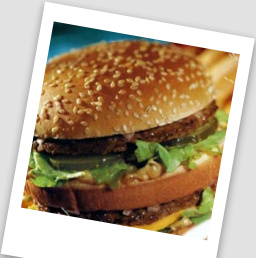
What Is Purchasing Power Parity?
The purchasing power parity (PPP) theory asserts that foreign exchange rates are determined by the relative prices of a similar basket of goods between two countries.
Developed in its modern form by Gustav Cassel in 1918, the concept of PPP is based on the law of one price - in an ideal and efficient market all identical goods must have only one price.
Absolute Purchasing Power Parity
The purchasing power of different currencies is equalized for a given basket of goods.
Relative Purchasing Power Parity
The difference in the rate of change in prices at home and abroad - the difference in the inflation rates - is equal to the percentage depreciation or appreciation of the exchange rate.
PPP's Basket of Goods
The PPP theory's baskets of goods comprise of a sample of all goods and services covered by gross domestic product (GDP). It includes followings:
- consumer goods and services
- food
- beverages
- tobacco
- clothing
- footwear
- rents
- water
- water supply
- gas
- electricity
- repair services
- maintenance services and etc.
- government services
- equipment goods and
- construction projects.
Big Mac Index
The Big Mac Index is a survey by The Economist which measures the PPP in about 120 countries.
 The Big Mac Index Burger
The Big Mac Index Burger
The name is derived from the Big Mac, a hamburger sold at McDonald's franchise restaurants.
Also known as "burgernomics", according to the Big Mac Index method, the exchange rates between two currencies should naturally adjust so that a sample basket of goods and services should cost the same in both currencies.
The "basket of goods" in the case of Big Mac Index is considered to be a single Big Mac burger sold at McDonald franchise restaurants.
The Big Mac was chosen because it is available in around the world McDonald franchise restaurants. And McDonald, at least in theory, can significantly negotiate input prices from its suppliers creating a sort of efficient market.
How To Calculate Big Mac PPP Exchange Rate
We weill calculate Big Mac PPP exchange rate using figures in July 16th 2009.
- The price of a Big Mac in the U.S.A. was $3.57
- The price of a Big Mac in the Euro Zone was € 3.31 (= $4.0794 in the U.S. Dollar. Varies by region.)
- The implied PPP was = € 3.31/$3.57 = 0.93
- Actual exchange rate was $1 = € 0.8114
- {(0.93 - € 0.8114)/€ 0.8114}X 100 = 14.6167% overvalued against the U.S. Dollar
- Thus the Euro was overvalued against the U.S. dollar by approximately 15%.
Thus the Big Mac Index is used as a yardstick to identify if a currency is expensive or cheap.
Shortcomings of Purchasing Power Parity Theory
- PPP numbers is a rough estimate since it can vary with the specific basket of goods used.
- Differences in quality of goods are hard to measure and thus reflect in PPP number.
- PPP theory can be used for long-term fundamental analysis only. A time horizon of 5 to 10 years is typical.
- The majof flaw of PPP theory is that it assumes goods can be traded easily without regard to variables such as tariffs, quotas, taxes, shipping etc.
- PPP theory discounts inflation, interest rate differentials, political developments.
Reference: The Organization for Economic Co-operation and Development
-
Return to
- Purchasing Power Parity
- Forex Fundamentals
- Home









Have your say about what you just read! Leave me a comment in the box below.